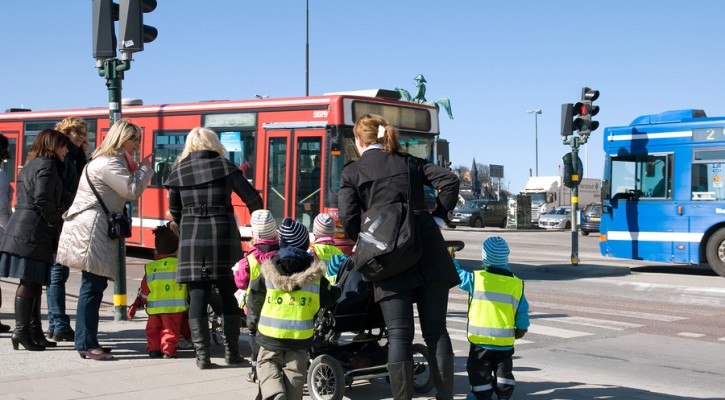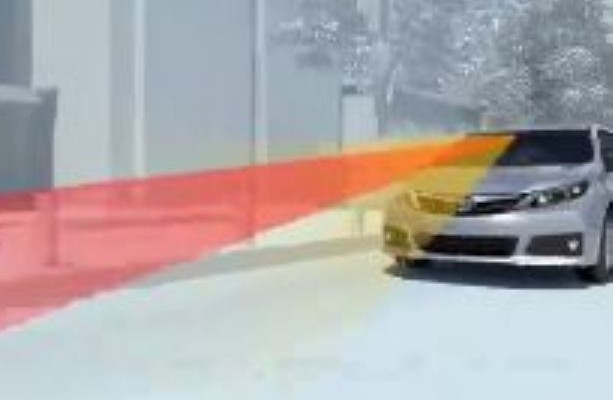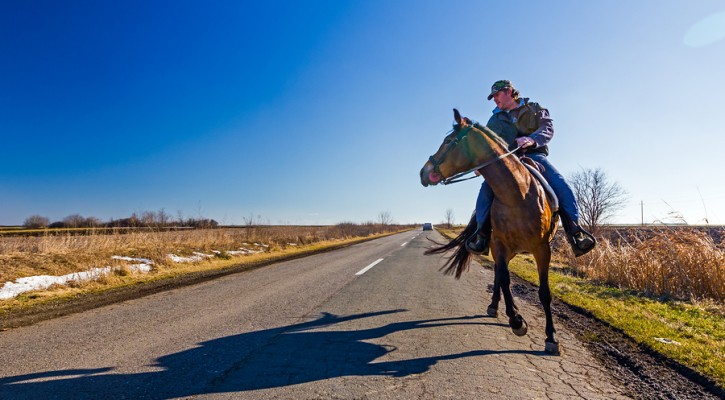Tornado On The Road
April 15, 2015
If you encounter a tornado on the road, what should you do? The driver in the video above was faced with this situation and he had no idea what he should do to escape the force of the tornado. According to the experts, he made one mistake but he also did the correct thing.
We’re in the height of tornado season and, while most tornados at this time of year occur in the plains states, tornadoes can form anywhere there are thunderstorms. Thanks to a 1991 video by a Kansas TV crew, a lot of people think that a highway overpass is the safest place to seek shelter from a storm but weather experts say that an overpass can be the most dangerous place of all to seek shelter. There are several reasons for that:
- The structure of the overpass can channel the winds into a wind tunnel effect and make them even stronger.
- Flying debris, traveling at up to 200 mph, can be channeled up into the narrower parts of the overpass and can do as much damage as a bullet. In the Kansas TV video, you can see debris being sucked up toward the area where the people are hiding.
- The wind under the overpass can change as much as 180 degrees.
- There are no handholds to cling to as the storm passes.
It turns out that the Kansas film crew was just extremely lucky that the tornado wasn’t that strong.
So what should you do if you encounter a tornado on the road? Weather experts offer the following advice:
- Do not seek shelter under an overpass.
- If there’s time, pull off the road and seek shelter in a strong building. Remain in the lowest part of the building in a windowless room or hallway if possible.
- If you can’t get to a building, seek an area such as a culvert or ditch below the level of the roadway; Cover your head with your hands.
- If there is nowhere to escape, remain in your vehicle with your seat belt fastened; lay down below window level and cover your head with a coat or blanket, if possible.
The man in the video above made a mistake by backing up under the overpass but he made the right choice by remaining inside his vehicle and laying down below the window level. He was very fortunate.
Remember, just because the funnel cloud has passed, you aren’t out of danger yet. Straight line winds that flow outside the area of the funnel cloud can do more damage than the funnel cloud itself. Another video from the recent tornado in Illinois shows a semi toppling over well after the funnel cloud had passed.
For more information on storm safety and how to deal with a tornado on the road, read: Thunderstorms, Tornadoes, Lightning…Nature’s Most Violent Storms

Reflective Vests At School Bus Stops
April 8, 2015
Should children be required to wear reflective vests at school bus stops? That’s the opinion of a South Carolina man after he was involved in a tragic incident last month.
At 6:30 in the morning, a 15 year old girl, escorting her younger siblings to school, tried to cross a four lane highway. Wearing dark clothes and crossing away from an intersection, she was struck first by a semi and then struck again as she was lying in the roadway. Police didn’t charge either driver because they felt there was little either driver could do to avoid hitting her.
Torn by the incident, the driver of the second vehicle wrote a letter to his state representative asking for a law that would require children at school bus stops to wear reflective vests.
His proposal isn’t a bad idea. While it may not be necessary for the state to pass a law, it is certainly something that school boards should encourage and parents can easily do on their own. With the time change last month, many kids are heading out to school while it’s still dark. Kids are impulsive and don’t always follow the rules. Anything that can be done to make them more visible is a good idea.
A quick search for children’s reflective vests on Google shows a wide variety of vests from $5 to $15. A cheap price to make the kids more visible. Reflective tape can also be sewn or pasted on backpacks at a very low cost.
Read more: Driver who hit Darlington teen asking lawmakers to require safety vests at bus stops

Toyota To Include Collision Avoidance Technology In US Cars
March 31, 2015
Toyota announced yesterday that they will be including collision avoidance technology as a low cost option in US vehicles beginning this year. The new “multi-feature, integrated safety packages” will be offered first in the RAV4 Hybrid SUV and the Lexus fourth-generation RX luxury crossover SUV and will be “introduced across nearly all U.S. Toyota and Lexus models and trim levels, top-to-bottom, by the end of 2017.”
Trying to get a jump on the competition while hoping, at the same time, to earn the Insurance Institute for Highway Safety (IIHS) “Top Pick+” safety rating, Toyota will be offering the collision avoidance packages at a sharply reduced rate to US customers. According to the Toyota press release, the “features help address three key areas of accident protection: preventing or mitigating rear collisions, keeping drivers within their lane, and enhancing road safety during night time driving.”
The collision avoidance technology will be offered in the form of two packages: “Toyota Safety Sense C for compact cars and TSS P for mid-sized and premium models will be available as an optional accessory from approximately $300 and $500, respectively.” That seems to be a very low price and will likely be offset by savings in the cost of insurance.
For compact cars, the Safety Sense C package will combine a camera and laser radar that will sense the possibility of a collision and warn the driver to slow with both audio and visual signals. If the driver hits the brake, the system will apply additional braking force. If the driver doesn’t react, the brakes will be applied to slow the vehicle by 19 mph. If the vehicle is traveling at speeds above 19 mph, it won’t stop the car completely but it will lessen the collision forces.
The package also includes a Lane Departure Alert (LDA) that can recognize visible white and yellow lines and alert the driver if the vehicle is departing from the lane. To alert the driver, the system uses both audio and visual alarms along with steering wheel vibration. Some models will also be equipped with Lane Keep Assist (LKA) that will control the power steering and help keep the vehicle within the lane.
Another feature is the Automatic High Beam (AHB) which uses a camera to detect oncoming vehicles and automatically switches the headlights from high to low beam and back again after the vehicle has passed.
On higher end models, the Safety Sense P option will use a camera and millimeter-wave radar for ‘enhanced performance.” The Safety Sense P option will combine all of the features of the Safety Sense C option along with a pedestrian detection function and Dynamic Cruise Control.
The pedestrian detection function detects pedestrians in addition to other vehicles to warn the driver and applies automatic braking if the driver doesn’t react in time.
The Dynamic Cruise Control detects the distance between vehicles and automatically slows the vehicle to maintain a safe following distance.
Toyota warns, wisely, that the collision avoidance technology systems aren’t meant to replace the driver and that “drivers should always be responsible for their own safe driving” and always maintain awareness of the driving environment.
Read more: Lexus and Toyota Roll-Out Low-Cost Automated Braking Safety Packages
Image compliments of Toyota USA

You Never Know
March 19, 2015
You never know what you may encounter on the roadway. Along with other traffic and pedestrians, drivers need to be aware of the possibility of horses and livestock on the road. A crash near Jacksonville Florida yesterday points out the necessity of watching for the unexpected while driving.
A man was riding a horse along a country road north of Jacksonville when they were hit by a car. The driver said she didn’t see them initially but, when she did, she hit the brakes but it was too late. The man was thrown from the horse and received critical injuries. The injured and frightened horse ran out into the roadway where it was hit and killed by another car.
In Florida, as well as most other states, horseback riders have a right to use the roadways. Horseback riders along with pedestrians, cyclists, motorcyclists, and those who use personal mobility devices are considered to be vulnerable road users. The Florida legislature is currently considering a bill to strengthen the penalties for anyone who injures or kills a vulnerable road user by careless or negligent actions.
Drivers on country roads may think they have a clear and unobstructed road but can be surprised by what may be around the next curve. Last year, while driving I was driving on a country road in North Georgia, other drivers approaching me flashed their lights at me. Thinking they were warning me of a patrol car ahead, I didn’t worry because I was traveling within the speed limit. What they were really trying to warm be about was a calf that had escaped its enclosure and was wandering alongside the road.
If you approach a horseback rider or a wandering cow from behind, keep in mind that the animal itself can only see straight ahead. The animal may be unaware of your presence. Slow down and give the animal a wide berth. Never honk your horn. That could cause the animal to panic and run out into the road.
You don’t necessarily have to be on a country road to encounter horseback riders. As part of the you never know what to expect file, take a look at this recent news report from Atlanta.
Read more: Car strikes and kills horse; Rider in critical condition

